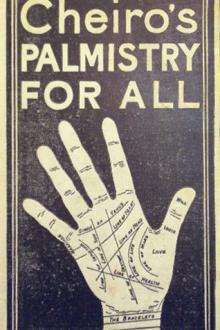The Diary - Samuel Pepys (red white and royal blue hardcover txt) 📗

- Author: Samuel Pepys
Book online «The Diary - Samuel Pepys (red white and royal blue hardcover txt) 📗». Author Samuel Pepys
Nothing is known of this play except what is told us by Pepys. ↩
These three persons were members of the late Music Society, in the Old Jewry, to whom Playford dedicated his Catch That Catch Can; or the Metrical Companion. Some of Wallington’s compositions are in that work, and in a collection called New Ayres and Dialogues, Composed for Voices and Viols. London, 1678, 8vo. —B. ↩
The Hon. Robert Boyle’s work, entitled, Some Considerations Touching the Style of the Holy Scriptures, was published in 1661, and a fourth edition appeared in 1675. It was translated into Latin, and the translation published at Oxford in 1665, Cogitationes de S. Scripturæ stylo. ↩
Henry, Lord Herbert, only son of Edward, second Marquis of Worcester, whom he succeeded in the title in April, 1667. He was created Duke of Beaufort on December 2nd, 1682, and died January 21st, 1699. He refused to take the oaths under William III. ↩
At Herringman’s. See August 10th, 1667, ante. ↩
Sir Samuel Morland’s first wife, Susanne, daughter of Daniel de Milleville, Baron of Boissay in Normandy, whom he married in 1657. ↩
The Flying Greyhound is frequently mentioned in the Calendar of State Papers. ↩
Winchcombe St. Peter, a market-town in Gloucestershire. Tobacco was first cultivated in this parish, after its introduction into England, in 1583, and it proved, a considerable source of profit to the inhabitants, till the trade was placed under restrictions. The cultivation was first prohibited during the Commonwealth, and various acts were passed in the reign of Charles II for the same purpose. Among the king’s pamphlets in the British Museum is a tract entitled Harry Hangman’s Honour, or Glostershire Hangman’s Request to the Smokers and Tobacconists of London, dated June 11th, 1655. The author writes: “The very planting of tobacco hath proved the decay of my trade, for since it hath been planted in Glostershire, especially at Winchcomb, my trade hath proved nothing worth.” He adds: “Then ’twas a merry world with me, for indeed before tobacco was there planted, there being no kind of trade to employ men, and very small tillage, necessity compelled poor men to stand my friends by stealing of sheep and other cattel, breaking of hedges, robbing of orchards, and whatnot.” ↩
All Mistaken; or, the Mad Couple, a comedy by the Hon. James Howard, published in 1672. Hart and Nell Gwyn acted Philidor and Mirida, the mad couple. ↩
The tract alluded to was called A True and Faithful Account of the several Informations exhibited to the Honourable Committee appointed by the Parliament to enquire into the late dreadful burning of the City of London, 1667. Reprinted in the Antiquarian Repertory, vol. i, p. 123. —B. ↩
Lord Ashley (afterwards Earl of Shaftesbury) resided in a house on the east side of Aldersgate Street, which was built by Inigo Jones for the Earl of Thanet, and was long known as Thanet House. ↩
Margaret, sixth daughter of William, second Lord Spencer of Wormleighton, was third wife of Lord Ashley. She died 1694. Dugdale mistakenly styles her his second wife. ↩
“Coaches with glasses were then a late invention, the ladies were afraid of being shut up in them: they greatly preferred the pleasure of showing almost their whole persons to the conveniences of modern coaches.”
Grammont Memoirs, chap. vii↩
Sir William Armorer, Equerry to the King. ↩
See July 29th. ↩
John, Lord Robartes. See August 21st, 1660. ↩
This remarkable fact is confirmed by Evelyn, in a letter to Sir Samuel Tuke, September 27th, 1666. See Correspondence, vol. iii, p. 345, edit. 1879. ↩
The Sea Voyage, a play borrowed from Shakespeare’s Tempest, and first acted in 1622. Published in Beaumont and Fletcher’s Comedies and Tragedies, 1647. ↩
John Napier or Neper (1550–1617), laird of Merchiston (now swallowed up in the enlarged Edinburgh of today, although the old castle still stands), and the inventor of logarithms. He published his Rabdologiæ seu numerationis per virgulas libri duo in 1617, and the work was reprinted and translated into Italian (1623) and Dutch (1626). In 1667 William Leybourn published The Art of Numbering by Speaking Rods, Vulgarly Termed Napier’s Bones. ↩
Mrs. Knight, a celebrated singer and mistress of Charles II. There is in Waller’s Poems a song sung by her to the queen on her birthday. In her portrait, engraved by Faber, after Kneller, she is represented in mourning, and in a devout posture before a crucifix. Evelyn refers to her singing as incomparable, and adds that she had “the greatest reach of any English woman; she had been lately roaming in Italy, and was much improv’d in that quality” (Diary, December 2nd, 1674). ↩
He succeeded Sir Henry Bellassis, who had been returned for Grimsby on the death of Sir Adrian Scrope, and who had been killed in the duel with Porter. ↩
Lincoln was a stable-keeper in Cow Lane. ↩
About this time Captain John Brooke and Captain William Rand were Masters Attendant at Chatham. ↩
In Spain. ↩
See August 14th. ↩
Tarugo’s Wiles, or, the Coffee House, a comedy by Thomas St. Serfe; printed in 1668. Great part of the plot is founded on the Spanish comedy, No





Comments (0)